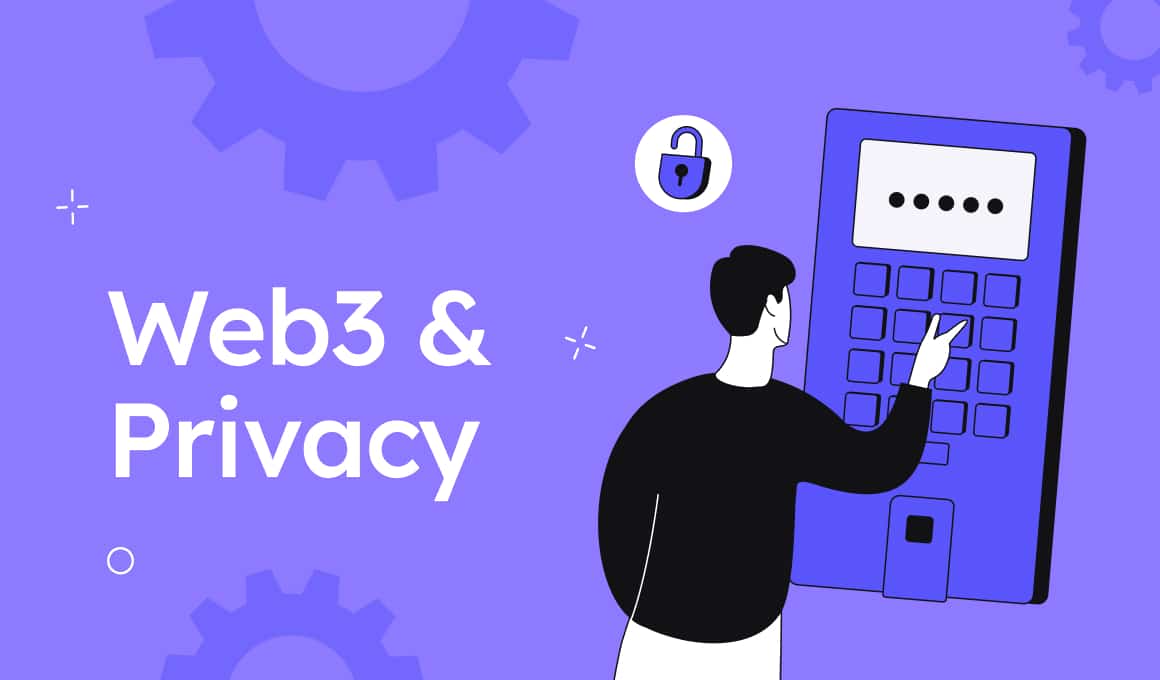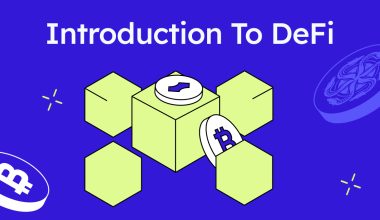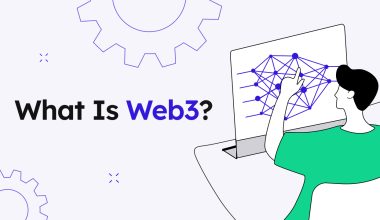In today’s digital age, privacy has become a growing concern as individuals navigate the vast online landscape. And with good reason: we have seen more than once large data leaks leaving users vulnerable and helpless, not to mention that we never actually know what our data is being used for. Web3 is about to change all that.
The rise of Web3, a new paradigm of the internet focused on decentralization and user empowerment, offers promising solutions to the challenges of data privacy.
In this article, we will explore how Web3 addresses privacy concerns by providing individuals with greater control over their personal information. We will delve into the concepts of self-sovereign identity, data ownership, and decentralized storage. We’ll also showcase a few real-world examples of how Web3 is revolutionizing privacy in the digital realm.
Protecting Privacy with Web3
Self-Sovereign Identity
In the traditional online landscape, users often surrender control of their identity to centralized platforms – we all know and have felt that one way or another. Web3 introduces the concept of self-sovereign identity, allowing individuals to manage and authenticate their own identity information. Through decentralized identity systems, such as Sovrin or uPort, users can selectively share their personal data only with trusted entities. For instance, you can verify your age for an online service without revealing your birthdate, thus preserving privacy while still accessing desired services.
Data Ownership: Regaining Control Over Your Information
In Web3, individuals have true ownership and control over their data. Instead of entrusting data to centralized servers, Web3 utilizes decentralized storage systems or blockchain-based networks. Users can encrypt and distribute their data across a network of computers, ensuring that no single entity has unrestricted access. This leads to many new use cases and revolutionary redesigns of well-known concepts:
- Decentralized Social Media: Traditional social media platforms often collect and monetize users’ personal data without their explicit consent. Web3 introduces decentralized social media platforms like Steemit and Mastodon, where users have ownership and control over their data. They can choose what information to share, and they are rewarded for their contributions using cryptocurrencies or tokens.
- Decentralized Storage Solutions: Web3 employs decentralized storage systems such as IPFS (InterPlanetary File System) and Filecoin to store data across a network of computers rather than relying on centralized servers. Users can encrypt their data, split it into multiple pieces, and distribute it across the network. This ensures that no single entity has access to the complete data, enhancing privacy and reducing the risk of data breaches.
- Data Monetization: With Web3, individuals can directly monetize their data. Platforms like Ocean Protocol and Datum enable users to share their data with organizations or researchers in a controlled manner. Users can choose which data to share, set the terms and conditions, and receive compensation in the form of cryptocurrencies or tokens. This empowers individuals to derive value from their data while maintaining control over its usage.
Let’s see how decentralized storage works and give you an example.
Decentralized Storage: How to Enhance Security and Privacy
Web3’s decentralized storage systems offer enhanced security and privacy. By distributing data across multiple nodes, it becomes challenging for unauthorized parties to access or tamper with the information. One notable example of such a system implemented is Arweave, a blockchain-based storage network that permanently retains data without the risk of deletion or censorship. This decentralized approach mitigates the risk of large-scale data breaches and provides users with greater peace of mind regarding their privacy.
InterPlanetary File System (IPFS)
IPFS is a decentralized storage protocol that allows users to store and retrieve files in a distributed manner. Instead of relying on a central server, IPFS utilizes a network of interconnected nodes to store and distribute data. Each file is given a unique cryptographic hash, ensuring its integrity and availability. Users can access files by referencing their content address, regardless of their location, making it resilient to censorship and single points of failure.
Real-world example: Filecoin is a project built on top of IPFS that incentivizes participants to provide storage space and bandwidth to the network. Users can purchase storage space on the Filecoin network, and their files are stored across multiple nodes in a decentralized manner. This creates a robust and resilient storage infrastructure where users retain ownership and control over their data.
Storj
Storj is another decentralized cloud storage platform that enables users to store and share data securely. It uses a distributed network of nodes to store encrypted data fragments. The data is fragmented, encrypted, and distributed across multiple nodes, ensuring privacy and redundancy. Storj employs blockchain technology and smart contracts to facilitate storage payments and ensure data integrity.
Real-world example: Storj has been utilized by various projects, including decentralized applications (dApps) and blockchain-based platforms. For example, a decentralized file-sharing application could leverage Storj to store files securely and allow users to share them directly without relying on a central authority. This ensures data privacy and control while promoting peer-to-peer interactions.
Sia
Sia is a decentralized cloud storage platform that utilizes a network of nodes to store and retrieve data. It employs smart contracts and blockchain technology to facilitate secure and efficient storage transactions. Sia’s unique feature is its redundancy and durability, as files are distributed across multiple nodes, ensuring high availability and protection against data loss.
Real-world example: Sia has been used by various individuals and organizations for decentralized file storage and backup solutions. For instance, a content creator could utilize Sia to store and distribute their media files without relying on traditional centralized platforms. This allows them to maintain ownership and control over their content, while also benefiting from the decentralized and reliable nature of the Sia network.
These examples demonstrate how Web3 decentralized data storage platforms like IPFS, Filecoin, Storj, and Sia offer alternative solutions to traditional centralized storage systems. They leverage blockchain and peer-to-peer networks to provide individuals with greater control, privacy, and redundancy over their data, enabling a more secure and resilient storage infrastructure in the Web3 era.
So, what about social media then?
Social but decentralized: it’s possible
In the context of Web3, decentralized social media platforms aim to provide users with greater control over their data, privacy, and content. Here are a few examples of decentralized social media platforms:
Mastodon
Mastodon is a decentralized, federated social network that operates on open protocols. It allows users to create their own instances, which are interconnected through a federation. Users can join different instances based on their interests or preferences, and each instance can set its own rules and moderation policies.
Diaspora
Diaspora is a distributed social networking platform that allows users to set up their own “pods” (servers) and connect with other users across different pods. It emphasizes privacy and gives users control over their data by storing it on their own pods, rather than a central server.
Steemit
Steemit is a blockchain-based social media platform that rewards content creators and curators with cryptocurrency. Users can earn “Steem” tokens by creating and upvoting content. The platform uses a decentralized governance model where users can vote on proposals and changes.
As you can see, decentralized social media is not only possible – it’s already been done. The concept will evolve, owing to its many, many benefits.
The Benefits of Decentralized Social Media
Data Ownership: Users have greater control over their personal data and can choose how it is stored, shared, and monetized. They are not reliant on centralized platforms that may monetize their data without their consent.
Privacy: Decentralized social media platforms often prioritize user privacy and allow users to communicate and share content without being tracked or monitored by a central authority.
Censorship Resistance: Decentralized platforms are less susceptible to censorship and content removal, as they distribute data across multiple nodes and rely on consensus mechanisms. This gives users the ability to freely express their opinions without fear of being silenced.
Monetization Opportunities: Some decentralized social media platforms provide users with the opportunity to earn cryptocurrency or other rewards for their contributions, such as creating content or engaging with the platform.
Community Ownership: Decentralized platforms often involve their users in decision-making processes, allowing them to participate in governance and influence the platform’s rules and policies.
Smart Contracts: Enforcing Privacy Through Code
Web3’s smart contract technology allows for the execution of agreements without the need for intermediaries, providing an additional layer of privacy. Smart contracts are self-executing contracts with predefined rules, powered by blockchain technology. They enable secure and transparent transactions, reducing the need to disclose sensitive information to third parties. For instance, Zero-knowledge proofs (ZKPs) enable the verification of certain data without revealing the underlying information, ensuring privacy while validating claims.
Here’s how smart contracts can help enforce privacy.
Confidentiality
Smart contracts can be programmed to handle sensitive data in a confidential manner. Encryption techniques can be applied to protect the confidentiality of data stored or processed within a smart contract. By encrypting data, only authorized parties with the appropriate decryption keys can access and interpret the information, ensuring that it remains private.
Pseudonymity
Smart contracts can support pseudonymous interactions, where participants are identified by cryptographic keys or addresses instead of revealing their real-world identities. This helps maintain privacy by reducing the association between on-chain activities and specific individuals. Pseudonymity provides a layer of privacy protection by allowing participants to transact and interact without directly exposing their personal information.
Selective Disclosure
Smart contracts can enable selective disclosure of information, allowing users to disclose specific details or attributes while keeping other data private. This is achieved through zero-knowledge proofs or similar cryptographic techniques, where participants can prove the validity of certain information without revealing the actual content. Selective disclosure allows parties to engage in transactions or verifications without exposing unnecessary sensitive information.
Permissioned Access
Smart contracts can enforce access control mechanisms to restrict who can interact with them and access certain functions or data. By implementing permissioned access, only authorized parties can invoke specific actions or access certain parts of the contract. This ensures that privacy-sensitive operations or data can only be accessed by approved entities, reducing the risk of unauthorized disclosure.
Real-World Examples: Web3 Innovations in Privacy
There are several real-world examples where Web3 technology is being used to enhance privacy and empower individuals. Here are a few notable examples:
Brave Browser
Brave is a privacy-focused web browser that leverages Web3 technologies to provide enhanced privacy features. It incorporates a built-in ad blocker and blocks website trackers, ensuring that users’ online activities are not extensively tracked for targeted advertising. It also introduces the Basic Attention Token (BAT), a cryptocurrency that rewards users for their attention while maintaining their privacy.
MyEtherWallet (MEW)
MyEtherWallet is a popular Web3 wallet for storing Ethereum and other ERC-20 tokens. It allows users to have full control over their private keys and securely manage their funds. MEW integrates with decentralized applications (DApps) to provide a seamless and private experience for interacting with the Ethereum blockchain.
Orchid
Orchid is a decentralized VPN (Virtual Private Network) powered by Web3 technology. It allows users to browse the internet privately and securely by routing their traffic through a decentralized network of nodes. Orchid uses blockchain-based payments to incentivize node operators and ensure privacy and anonymity while accessing the internet.
Incognito
Incognito is a privacy-focused blockchain project that enables users to create private versions of popular cryptocurrencies, including Bitcoin and Ethereum. By converting cryptocurrencies into privacy coins, users can conduct transactions with enhanced privacy features such as shielding transaction amounts and sender/receiver details. Incognito achieves this by utilizing zero-knowledge proofs and decentralized storage.
These examples illustrate how Web3 technologies are actively being used to address privacy concerns and provide individuals with greater control over their personal information. By leveraging blockchain, cryptography, and decentralized networks, Web3 applications are paving the way for a more private and secure digital ecosystem.
Conclusion
Web3 presents a transformative vision for the internet, addressing privacy concerns through innovative solutions. By embracing self-sovereign identity, data ownership, decentralized storage, and smart contract technologies, Web3 empowers individuals to take control of their personal information. Real-world projects and platforms built on Web3 principles are already revolutionizing privacy protection, enabling users to navigate the digital realm with confidence. As Web3 continues to evolve, it is crucial for individuals to understand its principles and leverage the opportunities it offers to safeguard their privacy in the ever-changing digital landscape.



